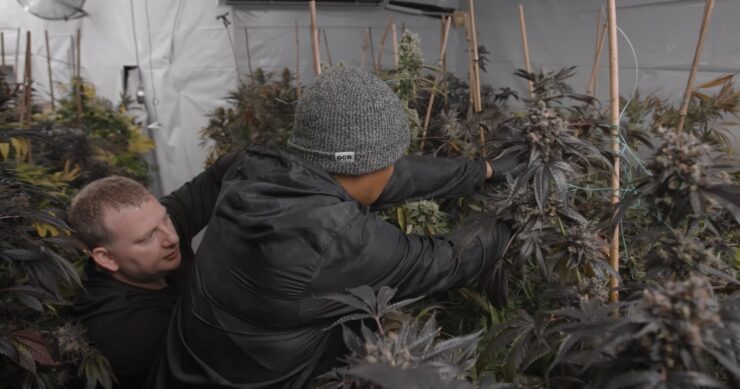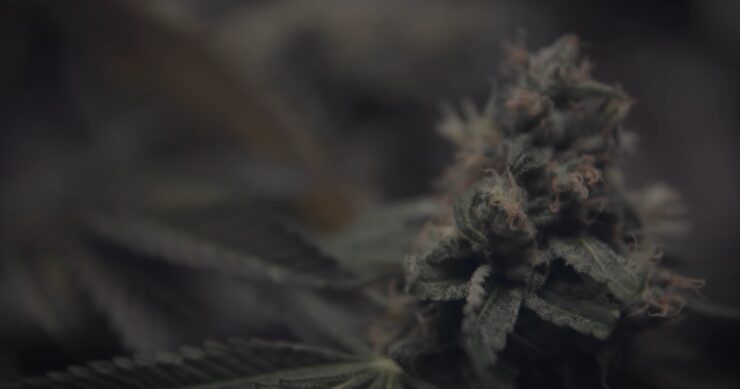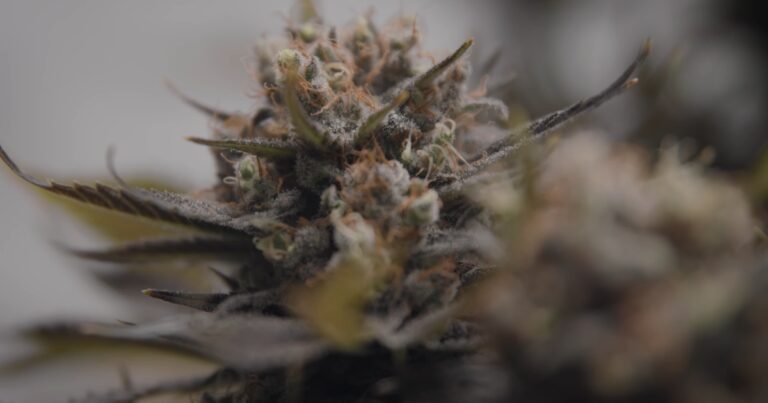Cannabis has been an integral part of human history, with its use dating back thousands of years. Archaeological evidence suggests that ancient civilizations across Asia and Europe utilized cannabis for its psychoactive effects, as well as for medicinal and spiritual purposes.
These early societies recognized the plant’s unique properties, incorporating it into their daily lives and rituals. This profound connection between ancient cultures and marijuana offers a glimpse into the plant’s significance in human history, laying the foundation for our understanding of its role in various civilizations.
The Cannabis Plant: A Botanical Overview

The cannabis plant, scientifically known as Cannabis sativa, is a versatile and hardy species, capable of thriving in a wide range of climates. It’s distinguished by its serrated leaves and robust growth cycle and is known for its psychoactive and medicinal compounds, primarily THC (tetrahydrocannabinol) and CBD (cannabidiol).
These compounds contribute to the plant’s various effects on the human body and mind. The biology of marijuana is complex and fascinating, offering insight into why it has been such a widely cultivated and used plant throughout different cultures and historical periods. Continue reading to find out more about the history of Cannabis.
Ancient China
In ancient China, cannabis was revered for its multitude of uses, including as a medicinal herb, a source of textile fiber, and its psychoactive properties. The Chinese pharmacopeia, dating back to 2800 BC, lists cannabis as a treatment for various ailments.
Additionally, archaeological discoveries, like the 2700-year-old grave in Xinjiang, have revealed marijuana seeds and leaves, suggesting its ceremonial use. This evidence points to a deep-seated cultural and practical significance of cannabis in ancient Chinese society, underscoring its integral role in the development of early medicinal practices.
Ancient India
Ancient India’s relationship with cannabis was both spiritual and practical. The Vedas, sacred Hindu texts, mention cannabis as one of five sacred plants. It was used in religious rituals and as an aid in meditation, believed to bring spiritual enlightenment.
Beyond its spiritual uses, marijuana was also utilized medicinally in Ayurveda, an ancient system of Indian medicine, for pain relief and to treat various disorders. This dual role of cannabis in ancient Indian culture highlights its importance not just as a substance for physical healing, but also for its psychological and spiritual benefits.
Ancient Egypt
Cannabis in ancient Egypt was primarily used for medicinal purposes. Historical texts, like the Ebers Papyrus (circa 1550 BC), mention the use of cannabis to treat inflammation and pain. Additionally, marijuana was likely used in religious ceremonies and possibly in the embalming process.
The versatility of cannabis in Egyptian culture demonstrates its value across different aspects of life, from health care to spiritual practices, reflecting a profound understanding of its therapeutic properties.
Ancient Greece

In ancient Greece, cannabis was known for its medicinal properties and was used to treat a variety of ailments, including ear pain and inflammation. Greek historians like Herodotus documented the Scythians’ use of cannabis steam baths, highlighting the plant’s psychoactive properties.
This adoption of marijuana in Greek medicine and the acknowledgment of its use in other cultures underscore the plant’s widespread recognition and the Greeks’ openness to integrating foreign knowledge and practices into their medical traditions.
Ancient Persia
Cannabis played a significant role in ancient Persian culture, both in medicine and in spiritual practices. The Zoroastrian texts, a key part of Persian mythology and religion, include references to cannabis as a sacred plant.
It was likely used in religious ceremonies to induce trance-like states, facilitating spiritual experiences. Moreover, Persian medical texts cite marijuana as a treatment for a range of ailments, indicating its important place in early Persian medicinal practices.
Pre-Columbian America
Before Columbus’s arrival, cannabis was present in the Americas, possibly brought by Asian explorers via the Bering land bridge. Indigenous cultures in what is now the United States used hemp for its fibrous properties in making ropes, clothing, and other items.
While there is less evidence of its psychoactive use in pre-Columbian America compared to other regions, the cultivation of marijuana for practical purposes demonstrates its global importance and versatility.
Modern History
The modern history of cannabis is marked by its spread across the globe, partly due to colonial expansion. In the 19th century, cannabis began to gain recognition in Western medicine for its therapeutic properties.
However, this period also saw the beginning of regulatory constraints on its use, reflecting changing social and political attitudes towards the plant. This era represents a significant shift in the perception and utilization of marijuana, setting the stage for the complex legal and cultural status it holds today.
20th Century
The 20th century saw dramatic shifts in the legal status and public perception of cannabis. Initially used for medicinal purposes, it later became associated with recreational use and counterculture movements, leading to strict prohibitions worldwide.
However, late in the century, there was a resurgence in recognizing its medicinal benefits, sparking debates and leading to gradual legalizations in various countries. This tumultuous history reflects the complex societal relationship with marijuana, influenced by cultural, political, and scientific developments.
Cannabis Today: Legalization and Regulation

Today, cannabis stands at a crossroads of legalization and regulation. Many countries are reconsidering their stance on cannabis, acknowledging its medicinal benefits and the failure of prohibitionist policies.
This shift has led to legal medical and recreational marijuana markets, research into its potential health benefits, and discussions on social justice related to past criminalization. The contemporary perspective on marijuana is a blend of historical knowledge and modern scientific understanding, shaping its role in current societies.
As we delve into the historical roots of cannabis, it’s intriguing to consider the modern-day implications on our bodies, prompting us to question and understand the nuances of CBD absorption and retention, a topic explored more extensively in another insightful piece.
Conclusion: Tracing the Historical Journey of Cannabis
The historical journey of cannabis is a tapestry of cultural, medicinal, and spiritual significance. From its ancient origins to modern-day legalization debates, marijuana has played a diverse role in human history.
Understanding this journey provides insight into the complex relationship between humanity and this multifaceted plant, revealing the evolving perceptions and uses of cannabis across different eras and cultures. This odyssey into the origins of marijuana highlights not just the plant’s versatility, but also its enduring presence in human civilization.
Related Posts:
- How to Get Into Cybersecurity Without a Degree: 14…
- How to Get into Cyber Security Without a Degree:…
- What Is the Most Complex Game You Could Play At A…
- When Does ‘Bachelor in Paradise’ Season 4 Premiere? (UPDATE)
- How Long Does Vaping CBD Stay in Your System?…
- What Does a Cognitive Behavioral Therapist Do?…











